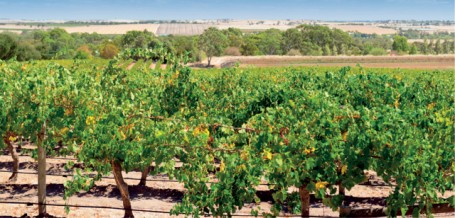By Tom Hollings
I constantly hear winemakers, wine writers and wine lovers refer to a wine’s ‘size’. Full-bodied to lean, heavy to light, the list of size related adjectives used to describe a glass of wine goes on and on.
But what does it all mean, and why is it important to understand?
To put it simply, when people discuss a wine’s ‘body’ or ‘weight’, they’re referring to the feeling of thickness or depth on the palate. The same way a chocolate milkshake tastes heavier or bigger than an apple juice, different grape varieties, regions and styles lend themselves to different ‘mouth-feels’.
Generally speaking the higher the alcohol percentage of a wine the more full-bodied it will taste. This can be obvious when comparing a sweet, syrupy fortified wine (18% alcohol) to a light and fruity moscato (7% alcohol), or quite subtle, for example, when comparing a ripe shiraz from a warm climate region (16% alcohol) to a leaner shiraz from a cooler climate (14% alcohol).
For anyone serving, selling or speaking wine, it’s very important to understand this distinction. Here’s a few reasons why:
- lighter wines are generally more ‘easy-drinking’, i.e not as complex and challenging.
- lighter wines are more palatable in hotter weather, whereas bigger wines are more at home on a cold winter’s night.
- lighter wines generally pair better with dishes lighter in flavour, whereas a heavy wine may overpower them.
- heavier wines will improve after decanting or swirling in a glass – oxygen allows the wine to ‘breathe’ and its flavours to develop.
- lighter wines, reds included, can benefit from being served at cooler temperatures than their heavier counterparts.
So when you have a customer after something either light or full-bodied, which variety should you reach for?
Light bodied whites include sauvignon blanc, semillon, riesling, pinot gris/grigio, vermentino and savagnin, with the more full-bodied varieties including chardonnay, viognier, verdelho, gewurztraminer and marsanne.
As for reds, pinot noir, gamay and barbera are all considered lighter reds, merlot, sangiovese and tempranillo are more medium-bodied, while shiraz, cabernet sauvignon, nebbiolo, malbec and zinfandel are all bigger, full-bodied varieties.
Grading a wine’s heaviness by the above categories will get you by, but if you want to show your expertise and pick the perfect wine for a meal or occasion then you need to also consider the region in which the grapes are grown.
Generally speaking, the warmer the region’s climate, the riper and more full-bodied the wine. On the flip side, cooler climates will result in leaner, more ‘elegant’ wines, often more savoury and spicy in flavour. Australian shiraz is a terrific example of this, morphing into completely different wines depending on region. Shiraz grown in warmer regions like the Barossa Valley, McLaren Vale and the Clare Valley is a heavy, rich wine, while the very same grape in cooler spots like Canberra, Adelaide Hills or Tasmania is a lighter, spicier drop.
There’s a lot more to choosing the perfect wine than just deciding between red or white. The range of wines on offer has never been bigger. Use this to your advantage by picking the right drop and your customers will keep coming back!



